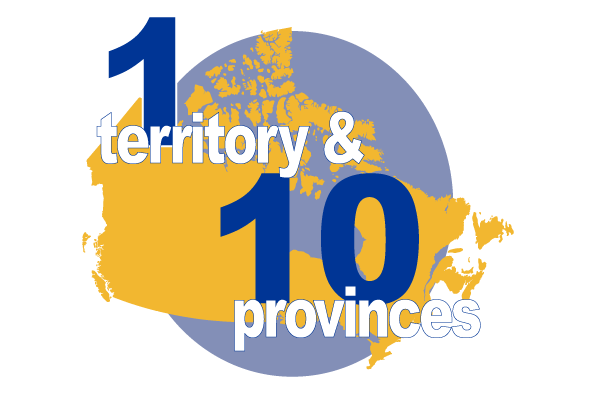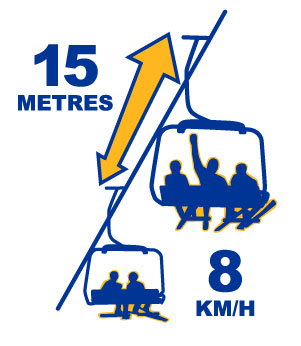Ski Well Be Well




generates $4 billion annually toward the Canadian economy, and supports over 35,000 jobs nationwide. There are 236 ski areas across 10 provinces and 1 territory, many of which are the primary drivers of their rural economies. 89% of revenues are generated during the winter season; for the average ski area, that season is 114 days (81 days for small ski areas).
BENEFITS AND ADVANTAGES OF SKI AREAS
Ski areas provide low-risk outdoor recreation opportunities for millions of Canadians. Here’s what makes the ski industry uniquely positioned to do so:

Canada’s 236 ski areas provide tens of thousands of acres of land for outdoor recreation. Ski area operators are experts at monitoring and managing the flow and volume of traffic in their outdoor spaces.

The majority of time spent at a ski area is spent outside in the fresh air, cruising down runs.

Face coverings, including neck gaiters, goggles, gloves or mittens, and helmets are standard pieces of skiing or snowboarding gear.

Long-standing skiing and snowboarding etiquette requires guests to respect one another and give space between themselves and other skiers and riders. Safe skiers leave space between other skiers.
Long-standing skiing and snowboarding etiquette requires guests to respect one another and give space between themselves and other skiers and riders. Safe skiers leave space between other skiers.

Snowsports provide numerous proven health and wellness benefits to participants. According to the WHO, “regular physical activity benefits both the body and mind.” The organization says that physical activity increases strength and fitness, reduces the risk of cardiovascular and other physical ailments and improves mental health, specifically reducing the risk of depression..1
1 World Health Organization, Q&A: Be Active During COVID-19 (accessed August 2020)

It is up to every individual, both ski area employee and guest, to do their part to help protect the health and safety of our skiing and snowboarding community. Following requirements to mitigate the risk of infection is part of the social contract between ski area operator and guest.

Many ski areas have adopted technologies to reduce personal contact between employees and guests. These include touchless payment and access technologies, such as advance online purchase and RF (radio frequency) scanning of tickets and passes.

Healthy outdoor activities and the promotion of healthy lifestyles while engaging with family and community have always been the appeal of skiing, riding and sliding on snow, its what we do as Canadians we live it outdoors. These traditions and sport etiquettes lend themselves to physical distancing while being socially responsible.
SAFE WORKING, SAFE RECREATING
Here is how ski areas are helping to keep their employees, guests and communities healthy:
Face Coverings are Required
Ski areas will require face coverings that align with public health authorities recommendations whenever physical distancing cannot be achieved. This includes both indoor and outdoor spaces, except when eating or drinking.


Ski areas will create operational plans that allow for appropriate spacing between parties. This includes but is not limited to the following parts of the operation: lift queues, ticket queues, ski and snowboard lessons, employee spaces, and food and beverage outlets.

Ski areas will adopt cleaning and disinfection strategies for all areas of their operation, including high-touch areas such as restrooms, restaurants, dining facilities, ticket offices, and rental shops. All cleaning products used will follow public health authority’s guidance on agents which are effective against COVID-19.

Operating Plans
Ski areas will review and amend both their overall and individual departmental operating plans to: comply with local regulations; maintain physical distancing requirements; and adhere to cleaning and disinfection best practices.
Ski areas will comply with local regulations regarding the management of indoor spaces.
Ski areas will create detailed, scalable operating plans for the management of outdoor spaces including base areas, lifts and ski terrain.
LIFTS
There are thousands of outdoor recreation options but what makes the ski industry different is its uphill transport: aerial ropeways like chairlifts, trams and gondolas, and surface lifts. Of these, chairlifts are the most common.
Canada’s ski areas are governed by the Z98 code, which develops design requirements, specifications for training, and operation and maintenance requirements for passenger ropeways.
Our ski areas believe that lifts can be operated safely without additional risk of infection by setting forth these best practices.
Face coverings will be mandatory on all lifts. 

Physical distancing in lift queues occurs organically due to the length of skis and snowboards. Ski area employees have vast experience managing queues and the expertise to ensure a consistent flow of appropriately-spaced traffic.
Guests will be asked to follow ski area protocols that direct guests how to load the lift. This will vary by lift type and capacity.


The average chairlift ride is 7 minutes, considerably shorter than most transportation activities such as riding a bus or taking a trip in an airplane. The average chairlift travels at approximately 8 km/h, 2 metres every second, providing constant directional air flow. Chairs are spaced approximately 15 metres apart. Express lifts, found at many ski areas and resorts, travel at nearly 27 km/h, with chairs spaced over 30 metres apart.
Standard ski area safety rules and on-mountain signage require that people clear the unload area quickly after disembarking. Once clear of the chair, skiers and riders have wide open spaces on which to slide.

Skiing and Snowboarding brings vital physical activity and helps sustain healthy strong families. An active community is a healthy community and never has physical activity been more important. Skiing and snowboarding are intrinsically following COVID-19 prevention protocols: people participate in their natural familial bubble, spread across expansive areas of outdoor space that lead with ease to social distancing, and guests wear individual PPE, like face covering, balaclava, gloves, and goggles; enjoying skiing and snowboarding at a ski resort is an activity with a naturally low risk of infection.

The majority of our lifts are open air chairs where the rider experiences a constant flow of fresh, clean air. Closed cabins like those on a gondola or tram have windows and vents that allow for the exchange of air.
Chairlifts check the boxes for low-risk transportation and recreation.
The ski industry is committed to providing outdoor recreation in ways that reduce the risk of infection.
Disclaimer: This document is not to be cited as a “standard”. The endorsers have pledged to maintain these practices based on best available information at the time of publication. Each retains the right to implement new and different practices and to discard others as experience warrants. This document does not in any way establish a cause of action against CSC as publisher.